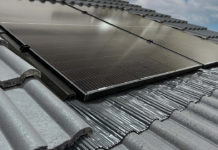
Allied Vehicles in Glasgow has invested more than £1million as it prepares to step up production of its range of wheelchair accessible vehicles to more than 7,500 per year.
The company – Europe’s leading manufacturer and supplier of such vehicles – announced last month that it was taking on 75 new staff as it announced the move and around half of them have already started work, taking their headcount to more than 600.
Operations Director George McAdam said new people are being brought in and trained in stages to allow production to continue.
“We’ve got a plan between now and July to go from 100 vehicles – it gradually builds its way up and come July we’ll have 153 vehicles per week,” he said.
“There’s a very detailed plan that looks at when we bring people in, when we move and when we make the changes to the production lines. We’ve got about half the new employees in just now and we’ve got a detailed schedule of recruitment and onboarding.”
George said it’s something of a balancing act with new challenges being presented every time there’s a change in vehicle supplies.
However, he said Allied are ready for all eventualities: “The project plan is pretty vast and has to allow for external factors. We’re having to do things like add in additional work stations and ramps, it’s a huge exercise of timing.
“We’re moving the production lines to free up areas, which allows a new line to be introduced, and it is various stages all the way through. We’ve brought people in, we’ve trained them, we’ve freed up one of the lines, so we’re going to be building even more of our top selling Peugeot Rifter Horizons … as we’re doing it, we’ll do it in a way that supports in training the new people.”
The company has also brought in a second £500,000 Trumpf TruLaser 1030 and a Randex computerised parts storage and retrieval system that cost over £80,000 – both vital in the task to step up production, as George explained: “When we start to get to volumes above 125 vehicles, the one laser just doesn’t cope with it, so we didn’t have enough capacity. This allows us to cut and shape parts in house and keeps us in control of the process.
“It’s very difficult to get capacity externally and at a good price, so the new laser is now fully operational.
“We are buying the last computers to allow us to do all our programming and nesting. Both machines are fully operational now, we’ve completed the training and we’re starting to utilise both machines as we ramp up through the volume. In the production stores area, the Randex system is in and we’re now in the process of programming it all, fitting all the shelves and getting it to talk to our K8 [mainframe].
“Because we’ve got the Randex it goes vertically and has lots of capacity and that frees up rack space that we wouldn’t have had. So again, it’s part of all the moving pieces on the chessboard that creates the space and lets us move towards that 153 number.”
On top of the equipment costs, George said additional training is costing over £300,000 and tooling a further £150,000. He says it’s a major investment – over £1million – to hit higher run rates through process and layout changes, tooling and new equipment, but he added: “Things like the laser and the Randex have a 10- to 15-year life, so there’s … good longevity for the investment and the capacity that we’re going to have. Also, the skills and the ability to move people around about– rather than have specific product lines we have production lines – you can do any product on them.
“In the past that was a major problem because we had a ‘line-specific’ builds, so when the line’s down you have nowhere else to build the product, but because we have now configured in a way they can take any products, we just move material in and out.
“And if we do get a problem on one product, we’ve got other products, we can be flexible and still achieve our numbers.”
However, none of these ambitions could reach fruition without Allied’s people, who George singled out for particular praise: “I think that through the times we had no vehicle supply, they did anything for us and now, where we’re ramping up, they’ve been very supportive from moving to different lines and they understand all the lumps and bumps on the road, and the support we’re getting from all of our employees is phenomenal … I see that as a major positive for the future if we can all work like this and deliver such a massive increase in such a short period of time.”

















